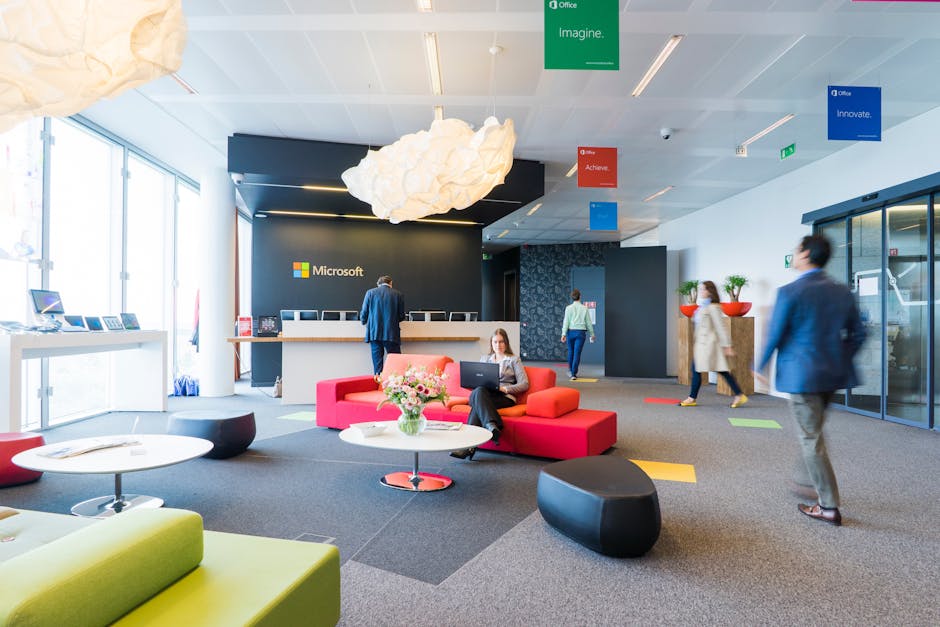Revolutionizing Workspaces: The Power of Breakout Areas in Modern Offices
“Explore the transformative impact of breakout spaces in modern office design. Learn how these versatile areas foster collaboration, boost productivity, and contribute to a more dynamic and engaging work environment. Discover key design elements and best practices for creating effective breakout zones. ”

Revolutionizing Workspaces: The Power of Breakout Areas in Modern Offices
In today's dynamic work environment, the concept of the traditional office is rapidly evolving. One of the most significant trends in modern office design is the incorporation of breakout spaces. These versatile areas are reshaping how employees interact, collaborate, and recharge during the workday.

What is a Breakout Space?
A breakout space, also known as a breakout area or break out zone, is a designated area within an office that provides employees with a change of scenery from their usual work environment. These spaces are designed to be more relaxed and informal, encouraging spontaneous interactions, creative thinking, and brief respites from focused work.
Key Features of Effective Breakout Areas:
- Flexible Furniture: Movable seating and tables that can be easily rearranged for different purposes.
- Comfortable Seating: Sofas, bean bags, or lounge chairs that promote relaxation.
- Technology Integration: Screens or whiteboards for impromptu presentations or brainstorming sessions.
- Natural Elements: Plants or natural light to create a refreshing atmosphere.
- Acoustic Considerations: Design elements that manage noise levels in open spaces.
The Benefits of Breakout Spaces in the Workplace
Incorporating breakout areas into office layouts offers numerous advantages for both employees and organizations:
1. Enhanced Collaboration
Breakout spaces provide an ideal setting for informal meetings and spontaneous discussions, fostering a culture of collaboration and idea-sharing. These areas allow team members to connect in a more relaxed environment, which can lead to increased creativity and problem-solving.
2. Improved Well-being
By offering a change of scenery and a place to relax, breakout areas contribute significantly to employee well-being. They provide a much-needed break from the desk, reducing stress and preventing burnout.
3. Increased Productivity
Contrary to what some might think, breakout spaces can actually boost productivity. Short breaks in these areas can help employees recharge and return to their tasks with renewed focus and energy.

4. Flexibility in Work Styles
Breakout areas cater to different work styles and preferences. They offer alternatives to traditional desks, allowing employees to choose environments that best suit their current tasks or mood.
5. Attracting and Retaining Talent
Modern office amenities like well-designed breakout spaces can be a significant factor in attracting and retaining top talent, especially among younger generations who value workplace flexibility and design.
Designing Effective Breakout Spaces
Creating a successful breakout area requires thoughtful planning and design. Here are some key considerations:
- Location: Place breakout areas strategically throughout the office for easy access.
- Size: Ensure the space is large enough to accommodate various activities but not so large that it feels empty.
- Purpose: Define the primary functions of the space (e.g., collaboration, relaxation, or both).
- Aesthetics: Use colors, textures, and design elements that align with your company culture and promote the intended mood of the space.
- Technology: Incorporate necessary technology to support different types of work and collaboration.
Best Practices for Utilizing Breakout Areas
To maximize the benefits of breakout spaces, consider the following best practices:
- Encourage Use: Promote the use of breakout areas through internal communications and lead by example.
- Set Guidelines: Establish clear guidelines for using the space to ensure it remains productive and respectful.
- Regular Maintenance: Keep the area clean, well-maintained, and updated to ensure it remains inviting.
- Gather Feedback: Regularly solicit employee feedback to improve and adapt the space to their needs.
- Monitor Usage: Track how the space is being used to make data-driven decisions about future improvements or expansions.

The Future of Breakout Spaces
As workplace dynamics continue to evolve, breakout spaces are likely to become even more integral to office design. We can expect to see:
- More technologically integrated spaces that seamlessly blend in-person and remote collaboration.
- Increased focus on biophilic design elements to enhance well-being and connection to nature.
- Greater customization options to cater to diverse work styles and preferences.
- Integration of wellness features like meditation corners or exercise equipment.
Conclusion
Breakout spaces are more than just a trendy office feature; they're a powerful tool for enhancing workplace productivity, creativity, and employee satisfaction. By providing versatile areas for collaboration, relaxation, and focused work, organizations can create a more dynamic and engaging work environment that meets the diverse needs of their workforce.
As we continue to redefine what the modern office looks like, breakout areas will undoubtedly play a crucial role in shaping the future of work. By investing in well-designed breakout spaces, companies can foster a culture of innovation, improve employee well-being, and create a workplace that truly supports the needs of today's dynamic workforce.